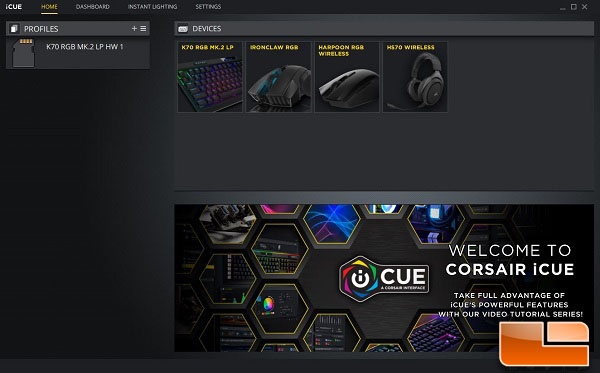

CORSAIR HARPOON RGB ICUE SOFTWARE
It’s never been entirely clear to me what the software does under the hood when this is done, but the result has always felt “right” to me. Because the Ironclaw and M65 both use a higher-end sensor, the Surface Calibration feature is available for them, but not the Harpoon. Normally, a user wouldn’t have three mice plugged at once as the first shot below shows, but, it’s a lot easier to quickly see differences between them when they are!Ĭorsair iCUE Software Sniper button configurationĪll of the mice here offer fully configurable RGB, so to find differences in the software between them was a little challenging. That even includes DRAM – even the simple one-color Vengeance LED kit I have in my personal rig. Admittedly, Corsair’s software had been hit-or-miss in years past, but iCUE remedied so much in one fell swoop.Ĭorsair releases a lot of product, and all of that product is now integrated with iCUE. When all was said and done, I remember walking away being most impressed with a piece of software, that of course being iCUE.

When we paid a visit to Corsair’s hotel suite at last summer’s Computex, the company naturally had quite a bit of gear to show off. We’d love to hear from those who disagree, because there could be use cases we’re not thinking of. That said, do you need this high of a DPI? It’s not bad to have the option, but for the overwhelming number of gamers, 10,000 is likely to be sufficient. Another bump hits the DPI, with the Ironclaw’s (and M65 RGB Elite’s) PMW3391 sensor able to hit 18,000, an 80% improvement over the Harpoon. The Harpoon gives you 6 programmable buttons, but the Ironclaw boosts that to 7. That’s compared to the Harpoon’s 97g, and M65 RGB Elite’s 99g. It’s hard to call it “heavy”, but among the three mice here, the Ironclaw weighs the most, at 105g. Choice is good, and what doesn’t suit me would suit the right person just fine. Whereas I found the Harpoon to be a bit small for my tastes, the Ironclaw is the opposite: it’s too big.


 0 kommentar(er)
0 kommentar(er)
